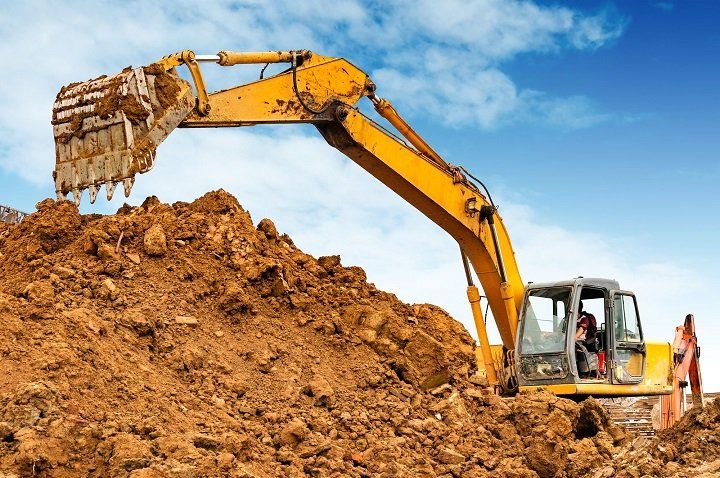Earthwork is such a specific type of occupation, which is required at the first stage of any construction. This process includes many successive stages of work, from planning to landscaping. At this stage of construction, however, like at all others, responsibility is needed. The quality of the foundation, as well as underground communications in the form of pipes, directly depends on the quality of the implementation of such work.
Kinds
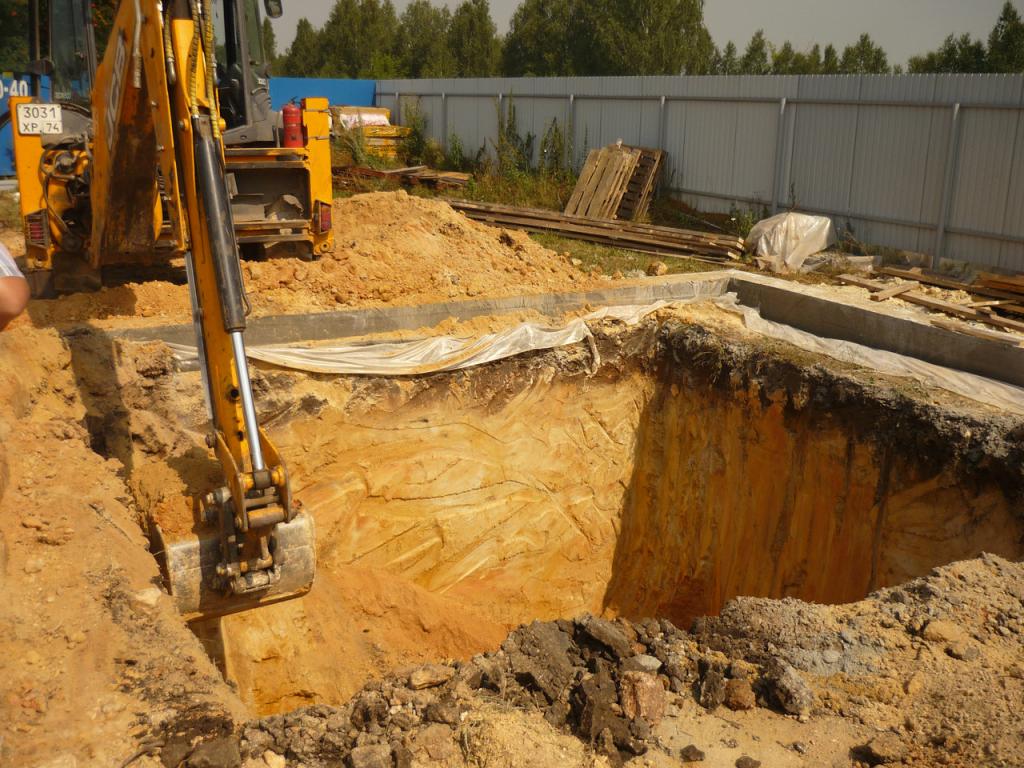
Earthwork is carried out in order to lay communications or establish a foundation.
The foundation is poured into excavations specially prepared in the ground. The recesses are of three types:
- Pits - for a stand-alone foundation and pillars.
- Trenches - for communications.
- Excavations - for laying strip foundations.
Any type of excavation should slightly exceed the dimensions of the foundation, regardless of the type of work, whether it be pits, trenches or foundation ditches, the depth of the structures should exceed the level of freezing of the soil.
Earthworks
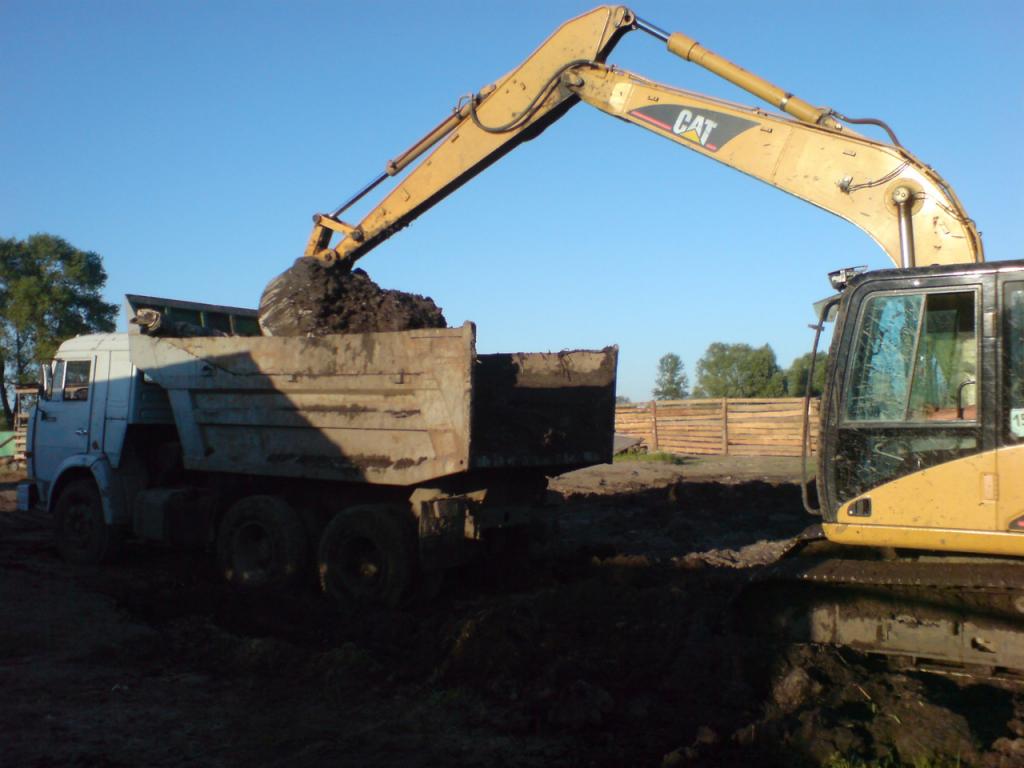
Almost any site must go through the preparatory phase before starting such work. For this, necessary measures must be taken:
- To dismantle old buildings and the foundation, if any, on the territory.
- Remove shallow vegetation, as well as trees and stumps.
- Clean the area of debris.
It is also necessary to think about how and from which side the equipment will approach the object so that it does not get stuck.
If you are disturbed by trees, you can’t cut them yourself without permission, because for this you need to obtain permission for earthwork from the environmental inspection and other authorities. If a citizen conducts earthwork without permission, he may be required to pay a fine.
Supporting work:
- Breakdown of the notches.
- Soil compaction.
- Fastening the walls of trenches and pits.
- Loosening of dense soils.
- If necessary, lowering the groundwater level.
- Water disposal.
The maximum depth of pits and trenches can be different. It depends on the type of soil. For example, in sandy loam and sand, this figure is 1-1.25 meters, and in clay and loamy soils 1.5-2 meters. Depth is indicated without additional wall mounts. With reinforcement, you can dig deeper (depending on the type of work).
Excavation development
The most popular excavation works is the development of pits. They are dug for different types of foundations or underground structures. Different types of excavators are useful for development, namely:
- Mini excavators.
- Loaders.
- Conventional excavators.
If the work is carried out by any of the types of excavators, the dug land is almost always taken out on special dump trucks. Special equipment works at the top, if you need a foundation pit of small size and depth. The excavator is placed inside the pit only if the depth is greater than the maximum reach of the bucket.
Alignment and Layout
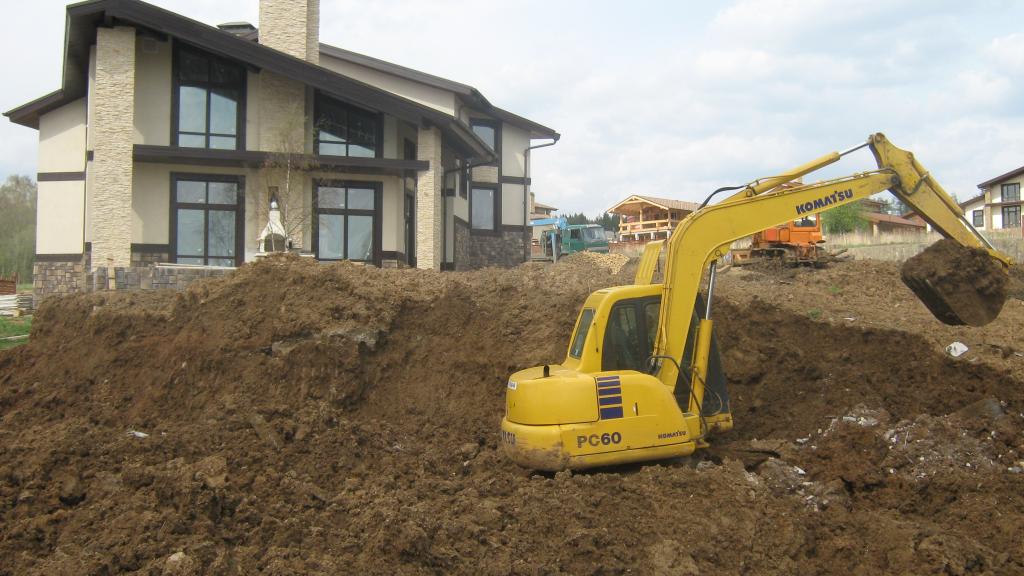
Earthwork - this is such work, which involves the alignment of plots. Before starting construction, 90% of the plots need to be adjusted. Partially align it with frontal buckets. This process is carried out in two directions, that is, along and across. Thus, the surface becomes more even.
Planning is the transfer of soil from one place to another (mainly such work is carried out in different parts of one site). But sometimes it is necessary to deliver the soil, if it is not enough for backfilling or other maneuvers. Sometimes they can increase the slope or carry out water drainage.
Digging trenches
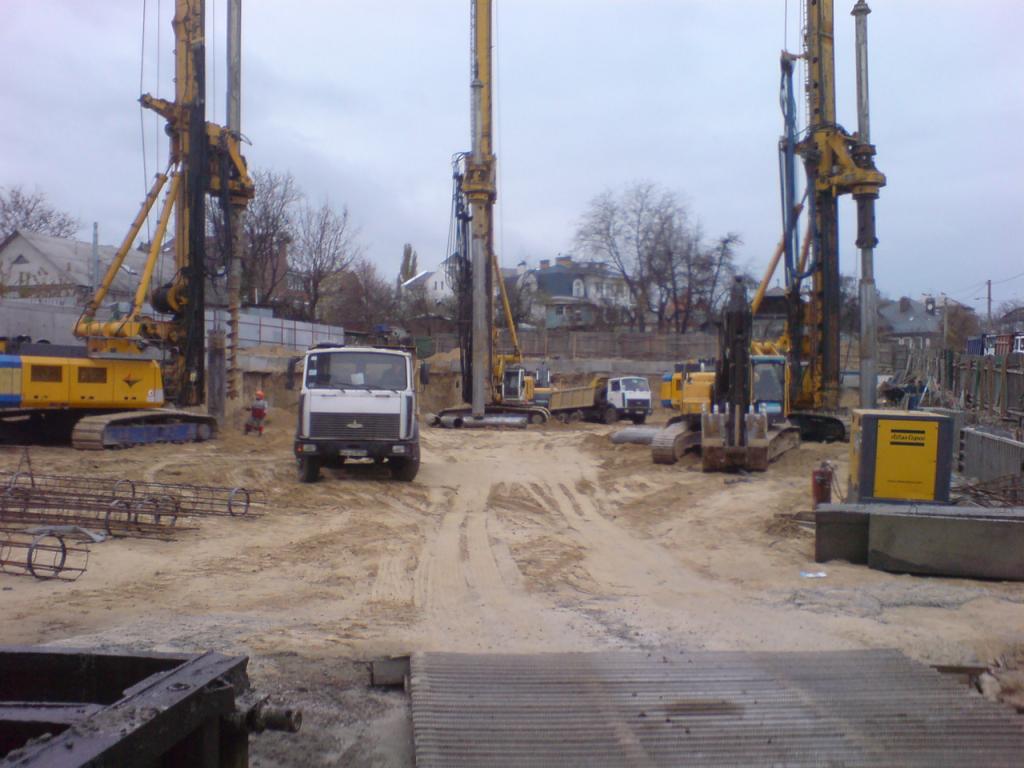
They are necessary for laying utility networks or other similar work. In trenches pave:
- Plumbing.
- Sewer systems.
- Some types of electrical wires.
- Pipelines.
Also, the foundation for the fence will not do without a trench.
Mini excavators and backhoe loaders act as diggers. Several meters deep trenches are made for trunk pipelines. Large crawler excavators are suitable here. Of course, some trenches digging with a shovel, but this is only if people do not have equipment or she can not get there.
Earthworks
You will probably be very surprised, but excavation works include some types of road works. During construction, the foundation is leveled under the new road. For this purpose, excess soil is removed or an additional layer of earth is poured, which is further leveled. Graders are used for maximum and complete alignment.
There is also a drainage system along the roads. Ditches and ditches serve it. Also, laying under the asphalt layer of crushed stone with sand are related to earthworks.
Soil movement
There are 3 types of soil movement:
- Small.
- The average.
- Great.
Small is carried out by several meters. The bucket of a conventional excavator can easily cope with this process without performing unnecessary movements, since the bucket is enough for this activity.
The average is carried out within 20 meters, where the soil is transported using a loader.
Dump trucks of different carrying capacities move the earth over long distances.
backfilling
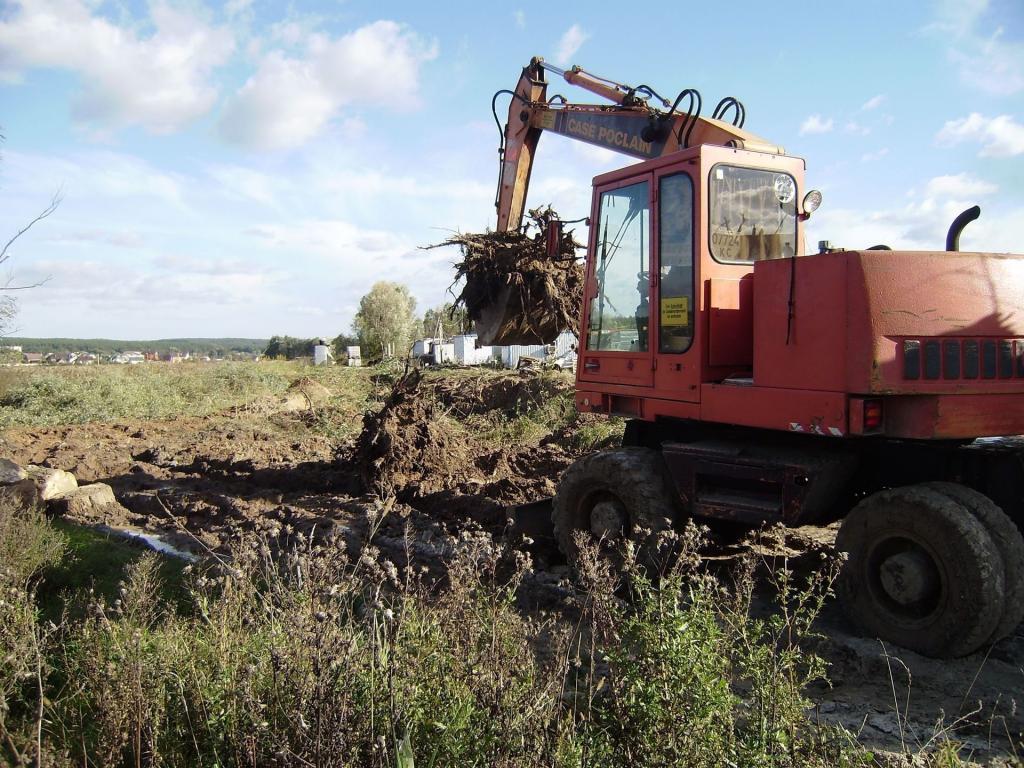
Sometimes pits after disassembly and construction of the foundation need backfilling, as subsidence and voids can occur. You also need to fill up the trenches that are dug for the laying of communications. The most efficient backfill technique is a backhoe loader.
Earthworks
To assess the scope of this type of work, you do not need to have supernatural skills. Volume estimation is quite simple. To correctly evaluate the duration of the process, it is necessary to calculate how many cubic meters of soil will have to be dug up in this area. The duration also depends on the type of soil, since it takes a different amount of time to dig loose or, for example, sandy soil.
If you need to dig a notch of complex shape on the site, then the entire territory can be divided into several even or relatively even parts.
The amount of work can be calculated using the design of the drawing, and already on the ground, everything is visually measured with a tape measure.
Manual development
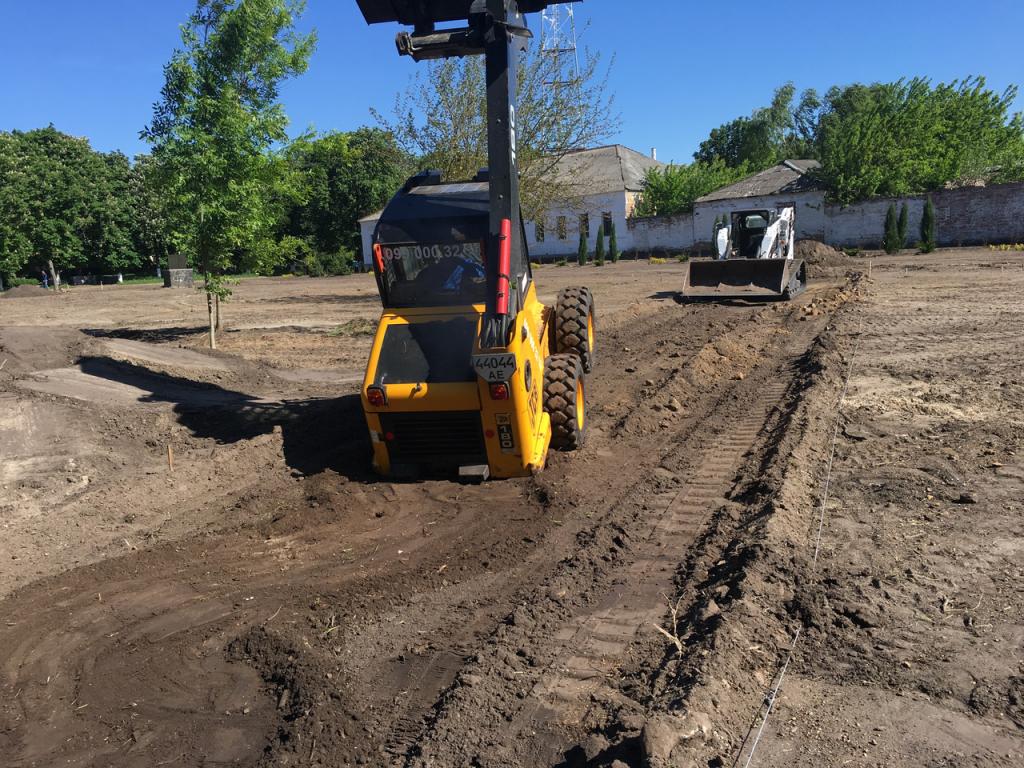
If the scale is small, you can carry out earthwork manually. But such work will not hurt where there is no possibility to use the equipment. Manually dig communications, as well as pits and trenches for the pile foundation.
Tines and shovels are also used for manual excavation. Here with such tools you can increase the efficiency of work done by hand:
- Scrap.
- Jackhammer.
- Electric and pneumatic shovels.
These tools are effective for digging dense soils. Such additional equipment is ideal for loose soil. Loosening at least three times increases the efficiency of excavation.
Mechanical engineering
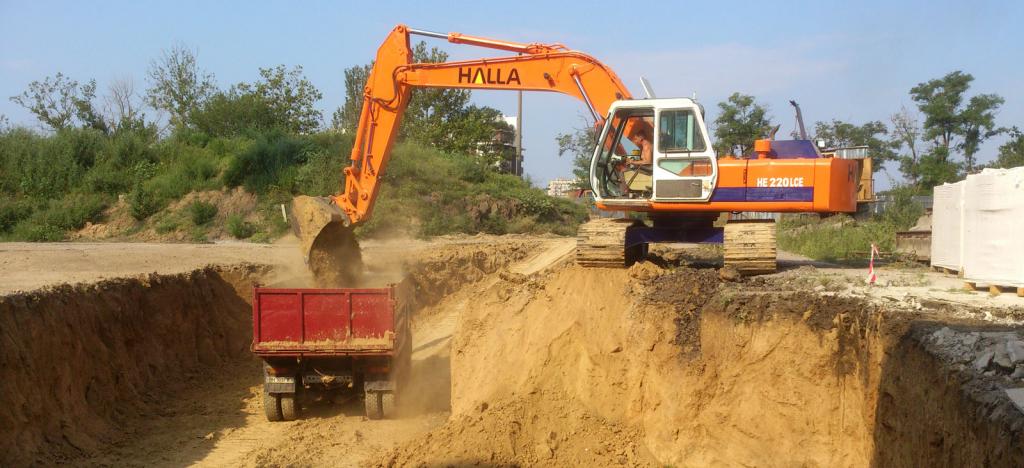
For a large amount of work, special equipment is used. Among them it is worth highlighting:
- Rippers.
- Scrapers.
- Graders.
- Bulldozers.
- Continuous excavators.
- Single bucket excavators for construction.
- Motor drills for earthworks.
Land is transported by special auxiliary machines. Also, in the process of work, it is important to order the soil so that it neatly folds into the embankment:
- The process of removing turf. Earthwork - this is the kind of activity that involves the removal of turf at the initial stage.In order not to damage the root system, it should be cut in small portions of 10 centimeters. Sod is unsuitable for backfilling, as it is poorly compacted. It is better to transplant or take it out later. In order not to confuse it with suitable land, it is better to fold the sod in a separate embankment. But, if there is a desire, the owner can use it to further refine the territory.
- Sand for the base. Sand is often used for foundation. Such a base reduces foundation stress. Therefore, during the period of freezing and thawing the soil, do not worry that the soil will sag or something else will happen.
- Soil compaction. Everything must be put in order after the process of filling the foundation, removing the formwork and waterproofing has passed. It is also necessary to fill up the voids that could have formed by chance, and carry out the ramming of the terrain.
In order to avoid freezing of the soil, the foundation must be filled up before the onset of cold weather. To avoid this, it is advisable to carry out work in the summer and allocate a reserve of several weeks in case of force majeure. To ensure that the quality of the filling of the recess was as effective as possible, it is categorically contraindicated to fall asleep:
- Elements of reinforced concrete.
- Broken pottery.
- Garbage.
If something like this gets into the foundation, then this will lead to the formation of voids where water will accumulate, which will destroy the foundation over time.
Redistribution and removal of excess soil
The soil that remains can be further used on the site. Terraces, hillocks and hills can be formed. Thus, the worked land will become an element of landscape design.
If necessary, excess land is evenly distributed over the site in order to raise the general level of the territory.
If there are unclaimed piles of land left, then they need to be taken out. But just loading the dump truck is not enough. It is necessary to apply to a special authority, which will issue a warrant for earthwork. But since this is a lengthy process, it is easier and cheaper to contact a specialized company that has these permissions and utilizes everything using its own transport.
Earthworks in winter
Winter is not an obstacle to earthworks. Yes, there are some difficulties, but this is not critical. True, the speed and cost of such work increases, but the quality does not suffer from this. Much depends on the type of soil. They recommend digging ditches and trenches with a depth of more than three meters.
For frozen ground, the following features are characteristic:
- Foulness.
- Increased electrical resistance.
- Plastic deformations.
Sandy, coarse-grained and gravel soils contain little water and therefore freeze slightly. This means that they can be developed at any time of the year. They do not sag in the spring and do not hesitate.
The work is carried out by three methods:
- Preliminary preparation, and then the usual development of the soil.
- Frozen soil is cut into small blocks.
- The work is carried out without any preparation.
The main feature of winter preparation - the soil should thaw a little before starting work. Helps in this:
- Open fire.
- Electricity.
- Hot water.
- Par.
The process itself is time-consuming and costly, so it should be used only in emergency situations. For example, to carry out emergency work or the company does not fit into the construction period.
ENIR earthworks
These are uniform rules that are designed for mechanized and manual excavation. In this collection, it is worth highlighting the following main sections:
- Loosening, cutting, slicing and excavation.
- Pit drilling.
- Drowning soil.
- Backfilling of trenches, excavations, pits.
- Layout.
- Loosening and tamping.
In general, this collection contains the norms and prices for mechanized and manual work related to land.
These earthwork rules are binding.
Artificial soil consolidation
In fixing need weak soils. It may be temporary or permanent.Temporary is freezing. And the constant views look like this:
- Silicatization.
- Polymerization.
- Bitumenization.
- Cementation.
Freezing is carried out in order to create an ice-soil shell. Carried out in highly saturated soils, which are called quicksand. To do this, steel columns are lowered into the ground, which serve as refrigeration units. After the soil has undergone prolonged cooling, it freezes. After that, they carry out all the necessary work.
Cementation and bitumenization are based on the injection of cement mortar or heated bitumen, respectively, into porous soils with a high filtration coefficient.
Polymerization and silicatization is carried out in order to fix the soil and increase their strength.
